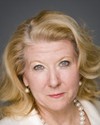Good morning. My name is Kate McInturff. I'm the executive director of FAFIA. I'm also the former coordinator of the gender and peace-building working group of Peacebuild. I appreciate the invitation to come to speak to you this morning.
The question before the committee, as I understand it, is one of language. However, as I think you probably know, the issue at stake here is not only the words that come out of our mouths but the actions we perform and the effect of those actions on our common well-being, on the ability of all of us to live lives free from violence, fear, humiliation, and suffering--to live lives with dignity and security.
I'm going to make three points today: first, that there has been a shift away from the use of the term “gender equality”; second, that the changes in language are symptoms of a more significant shift in the human and financial resources that are earmarked for work on gender equality; and third, that there are immediate and progressive changes that can be made to support the work of the government in advancing gender equality internationally.
First let me speak to the language changes.
Public foreign policy statements by the Government of Canada show a strong and demonstrable preference for the phrase “equality between women and men” or “the human rights of women and girls” or just “women and girls” over the phrase “gender equality”. The significance of this shift is that “gender equality” encompasses the social and cultural forces at work in fostering equality or inequality.
I understand that you heard from Mr. Kessel on Tuesday. Mr. Kessel suggested that if he were to put himself in the place of a university professor, he would not find that there was sufficient evidence to support this claim concerning language use. In particular, he suggested a review of speeches by ministers, of government positions, and of government websites.
Well, I have been in the position of being a professor at a university and indeed have taught courses on research methodology, and I have reviewed speeches by ministers, reviewed government positions, and reviewed government websites. So let me take a moment to provide some of the evidence for which Mr. Kessel called.
Of the 47 speeches delivered by Minister Cannon during his term, he makes 17 references to “women”. Minister Cannon makes one reference to “gender equality”, and he does so in the course of offering congratulations to Michelle Bachelet on her new post. He says it when he states the proper name of the UN entity to which she has been appointed; that is, the United Nations Entity for Gender Equality.
Number two, none of the stated priority concerns for 2010/2011 on the Foreign Affairs website mentions either “women” or “gender equality”.
Point three, at the three United Nations Security Council debates on women, peace, and security that have occurred between 2008 and 2010, Canadian ambassador Normandin uses the phrase “women and girls” nine times, “women” 26 times, and does not use the phrase “gender equality” once.
Four, in a speech delivered by Foreign Affairs official Peter Kent at a United Nations meeting on peace and security through women's leadership, delivered September 24, 2009, Mr. Kent uses the phrase “women and men” or “equality between women and men” seven times, the phrase “women and girls” three times, the word “women” three times, and does not use the phrase “gender equality" once.
Five, in the six statements delivered on international law, “gender equality” is not mentioned once.
Six, in the 10 speeches delivered by the UN mission in New York on human rights between 2008 and 2011, the term “gender equality” is only used twice, and on both occasions it's used to refer to the proper name of a pre-existing policy document.
Seven, the new national action plan on women, peace, and security contains 62 references to “women and girls”, 10 references to “men and women”, 34 references to “women”, and one reference to “gender equality”, again as part of the proper name of a pre-existing document.
I can go on. I have more lists. I won't go through all of them here, but I'd be happy to elaborate during the question period.
I also want to make an additional point. I understand that Mr. Kessel suggested this usage is standard and part of what countries are doing everywhere, and I want to come back to the example of the national action plan. Canada's national action plan has one reference to “gender equality”, and that is as part of the proper name of another document. I spent some time counting. There are currently 20 national action plans from countries ranging from Chile to Uganda, Sweden, Liberia, Côte d'Ivoire, the Philippines, and so on.
If you count the usage of the term “gender equality” collectively in these 20 national action plans, you find that “gender equality” appears 139 times, and “gender” appears 1,046 times. The average per national action plan is seven uses of “gender equality”, and 52 uses of “gender” to say things like gender-focused, gender lens, gender-based violence, and so on. So Canada is well below the international average.
On the affirmative side, in the 18 speeches delivered by the UN mission in New York on economic and social affairs between 2008 and 2011, the term “gender equality” is used 12 times--an average of less than once per speech. As well, although gender equality and women's human rights are not part of the Department of Foreign Affairs priority concerns for this year, the DFAIT website does state that Canada's foreign policy priorities include the elimination of violence against women, the full and equal participation of women in decision-making, and the mainstreaming of a gender perspective. Also, as of this October, the Government of Canada does have a national action plan for the implementation of the United Nations Security Council resolutions on women, peace, and security, and this plan was developed with input from civil society.
I see all of these as very positive signs.
In conclusion, although the term “gender equality” is used on occasion, there is a demonstrable preference for the language of “women” over “gender equality” in official public and policy statements related to the Government of Canada's foreign policy.
Now, does language matter? Yes. The question of language changes is important to the extent that it reflects changes in the capacity of the Government of Canada to promote the aims of international norms and laws regarding gender equality and women's human rights. I can tell you what those norms are later if you have any questions.
To take the example of Security Council resolutions on women, peace, and security--a file on which Foreign Affairs specifically has the lead--there has been positive progress in achieving the aims it sets out. The new national action plan is a very important step toward ensuring that Canada is making a meaningful contribution in achieving these goals. However, for that document to be meaningful, there must be sufficient human and financial resources, and there has to be a means to ensure accountability for all the arms of government responsible for its implementation.
I have tremendous respect for the expertise and experience of those working at Foreign Affairs. I do not question their commitment, demonstrated in important policy and programming changes and developments over the past years that have had meaningful impacts on the lives of women and girls. I'd be happy to speak about the impacts of some of this programming on the lives of women in the Democratic Republic of Congo, for example.
However, there have been changes within Foreign Affairs that may affect its capacity to implement the new national action plan. In 2008, there was a reorganization of what is now the human rights policy and governance division. At that time, as part of that reorganization, the position of deputy director for women, peace, and security was eliminated. The money previously earmarked specifically for projects on women, peace, and security was made part of a larger pool for which projects under six or seven different priority areas competed. The positions with the specific mandate to provide gender-based analysis were re-categorized as human rights policy positions.
Responsibility for the women, peace, and security file was shifted from the human rights policy division to the stabilization and reconstruction task force, where there is currently one “specialist in women, peace, and security”. Partly as a result of some of the funding changes, there has been a concomitant decrease in the capacity of civil society to be a strong interlocutor and a source of support and innovation on these issues. I'd be happy to speak about that as well later on.
Finally, the national action plan requires accountability from departments and agencies responsible for its implementation. In order to measure the success or failure of the implementation of the national action plan--and indeed all progress on international norms and laws related to gender equality--there must be consistent and expert gender-based analysis of the policy and programming outcomes of the responsible departments and agencies.
However, the 2009 report of the Auditor General of Canada on gender-based analysis concluded that there was no government-wide policy requiring departments and agencies to perform gender-based analysis. The Auditor General also found that few of the departments that do perform gender-based analysis can provide evidence that these analyses are used in designing public policy. Thus, both the achievements and the gaps of the responsible departments and agencies appear not to be consistently measured at present.
Moving forward, there are a number of steps that can be taken to ensure that Canada is a leader in achieving the aims set out in its international commitments to gender equality and that require no additional financial resources.
First, there must be positions specifically earmarked for specialists or policy advisers with expertise on gender equality within the departments and agencies responsible for this work. There are people with this expertise within our government, but we cannot depend on the goodwill of knowledgeable individuals when those individuals may be in positions that have an entirely different mandate.
Second, there must be ongoing and consistent gender-based analysis of policy and programming. There is no other way to measure progress or effectiveness.





